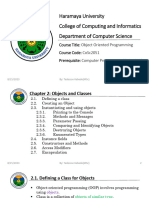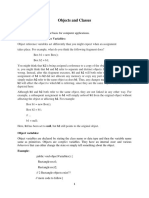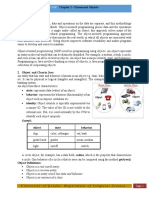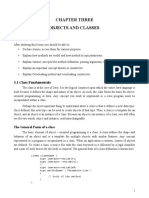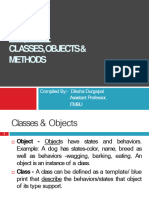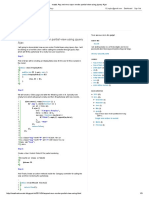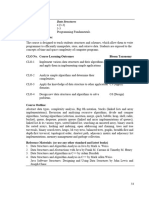0% found this document useful (0 votes)
51 views48 pagesObject Oriented
The document discusses object-oriented programming concepts like classes, objects, attributes, behaviors, and how they relate to real-world objects. It explains that classes are blueprints used to create multiple object instances, and that objects have identity, attributes describing their state, and behaviors defining what they can do.
Uploaded by
Raghu GowdaCopyright
© © All Rights Reserved
We take content rights seriously. If you suspect this is your content, claim it here.
Available Formats
Download as PPTX, PDF, TXT or read online on Scribd
0% found this document useful (0 votes)
51 views48 pagesObject Oriented
The document discusses object-oriented programming concepts like classes, objects, attributes, behaviors, and how they relate to real-world objects. It explains that classes are blueprints used to create multiple object instances, and that objects have identity, attributes describing their state, and behaviors defining what they can do.
Uploaded by
Raghu GowdaCopyright
© © All Rights Reserved
We take content rights seriously. If you suspect this is your content, claim it here.
Available Formats
Download as PPTX, PDF, TXT or read online on Scribd
/ 48









